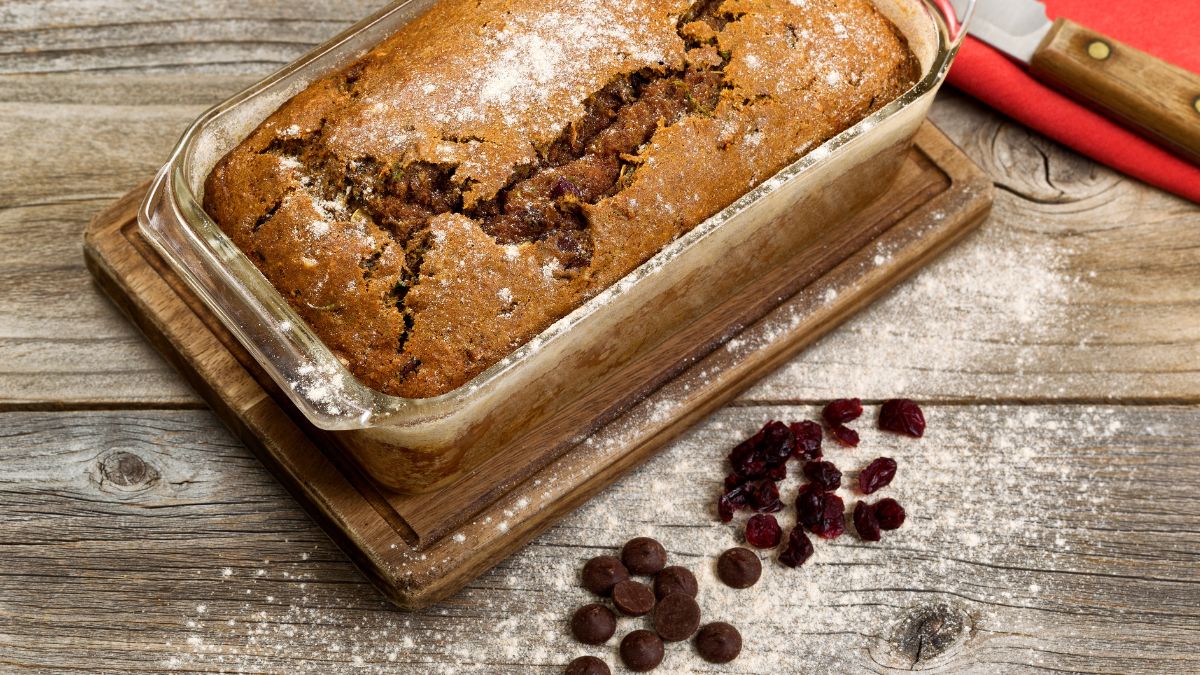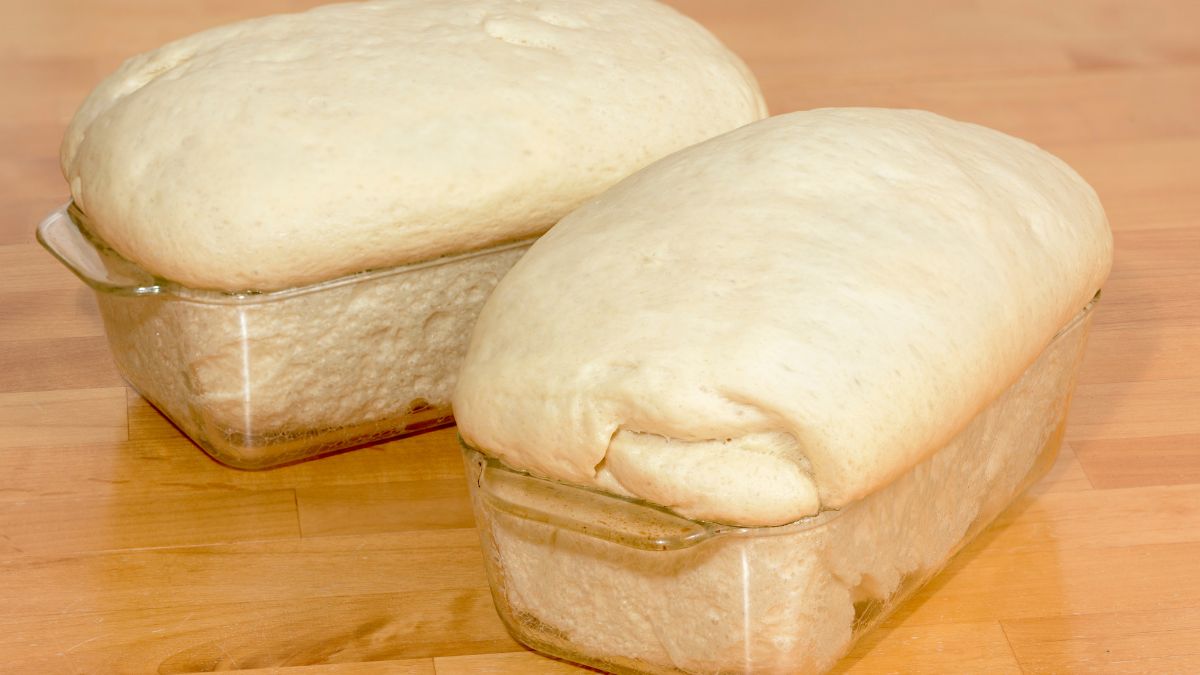Can You Bake Bread in a Glass Pan? Read Pros & Cons

Baking bread is one of my favorite hobbies, but I’ll admit I’ve always been a bit skeptical about using glass pans. I’ve heard so many conflicting opinions on whether glass or metal is better for baking bread, so I decided to experiment to find out the truth. After baking several loaves of bread in both glass and metal pans, I have some insights to share on the pros and cons of using glass. So, can you bake bread in a glass pan?
In short, you can bake bread in a glass pan. Still, the process is a bit different. Since glass conducts heat differently, there are some things to look out for.
If you’ve ever wondered whether you can bake bread in a glass pan or how it might turn out, read on. I’ll give you the lowdown on how to bake bread in a glass, how long it takes, whether you need to grease the pan, the best temperature to use, and ultimately whether glass or metal is the better choice for your homemade loaves.
What Are the Pros and Cons of Baking Bread in a Glass Pan?
Baking bread in glass pans has some real advantages. As an avid home baker, I’ve tried baking loaves in glass and metal pans. Here are a few of the reasons why glass reigns supreme in my kitchen:
- Glass is non-reactive. It won’t interact with the ingredients in your bread dough. Metal pans can impart a metallic taste to your loaf. Glass pans produce a clean, pure flavor.
- You get an eye-level view of your bread as it bakes. The transparency of the glass means you can peek in on your loaf without opening the oven door. You’ll know exactly when it’s golden brown and ready to come out.
- Glass pans heat evenly. They don’t have the hot spots that metal pans are prone to. Your bread will bake uniformly all over for the perfect rise and crust.
- Glass pans are durable and long-lasting. A glass loaf pan can last many years with proper care and handling. They won’t warp, bend or dent as some metal pans do over time.
However, baking bread in glass pans definitely has some downsides before diving in. As someone who has tried it, here are a few of the potential cons I encountered:
- Glass conducts heat differently than metal, so your bread may bake unevenly. Glass pans tend to create hot spots, which can lead to burnt bottoms before the inside is done. You’ll need to adjust the baking time and possibly temperature to get it just right.
- Glass pans require greasing and sometimes a dusting of flour. If you don’t grease the pan, your bread will stick badly. I learned this the hard way! Be generous with the grease and flour on all surfaces of the pan.
- Glass pans can shatter under extreme temperature changes. Don’t preheat an empty glass pan, and then add the dough. Let the pan heat up with the dough already in it. And avoid putting a hot glass pan in cold water. Let it cool completely first to prevent cracking.
- Glass pans typically cost more than metal. If you’re on a budget, glass may not be the most affordable option. Metal loaf pans work great and tend to be cheaper.
How to Bake Bread in a Glass Pan?

Baking bread in glass pans can be tricky, but with some tips and tricks, you’ll be turning out perfect loaves quickly.
Firstly, glass isn’t naturally nonstick like metal, so greasing your loaf pan is necessary. I like to use cooking spray, generously coating all sides of the pan. You can also use melted butter, oil, or pan grease. Make sure you get into all the corners and up the sides.
If a recipe calls for baking at 350 °F (180 °C), I bake my glass pan loaf at 325 °F (160 °C). Glass pans heat up faster than metal, so you must slightly lower the baking temperature. Check on your bread about 10 minutes before the recommended baking time to see how it’s browning. If it’s getting too dark, you may need to tent the loaf with foil.
Bake for about 50-70 minutes, until the internal temperature reaches 190-210 °F (85-100 °C). The exact time will depend on the size and type of loaf. But keep an eye on your bread — with glass, you’ll see when it’s done! The loaf should also sound hollow when tapped, and a toothpick inserted into the center should come out clean.
Now, since glass pans don’t retain moisture as well as metal, I like to add a bit of steam to the oven when baking bread. Place a broiler pan with some water on the bottom rack of the oven before preheating. The water will release steam as the oven heats up and during baking. You can also spritz the loaf with water a couple of times during the first 10-15 minutes of baking.
Once done, resist the urge to slice into your fresh-baked bread right away. Let the loaf cool completely, for at least 2 hours, before slicing and serving. The glass pan will stay hot for a long time after removing from the oven, and slicing too soon can cause the loaf to fall apart. Patience is key!
With the proper adjustments, baking any type of bread in glass pans can yield fantastic results. Follow these tips, and you’ll enjoy homemade bread from your glass loaf pan in no time. Here’s an amazing example of sourdough baked in glassware!
Which Is Better, Glass or Metal Loaf Pan?
While glass pans can produce gorgeous, golden loaves of bread, some extra steps are required to get great results. Glass pans make loaves with a crispier, browner crust, while metal pans yield a softer crust. Glass is also non-reactive, so it won’t impart any metallic flavors. However, such pans require more greasing and often longer baking.
For a beginner, a metal loaf pan may be more foolproof. But with some practice, you’ll make beautiful glass-pan bread in no time! Armed with the potential downsides, you can avoid the pitfalls and enjoy all the benefits of baking.
For me, I prefer to use glass pans when I want an evenly browned loaf with an easy release and metal pans when I’m looking for a darker, crisper crust and maximum browning. Either type of pan will work great, so choose what fits your needs and budget.
So there you have it, the truth about baking bread in a glass pan. As with anything, there are pros and cons to consider. Glass pans can produce gorgeous, golden loaves.
Still, they require adjustments to time and temperature. For me, the visual appeal and ease of cleanup win out.
So, you can’t go wrong either way. What do you think — would you try baking your next loaf in a glass dish? I would love to hear your opinion in the comments below!
